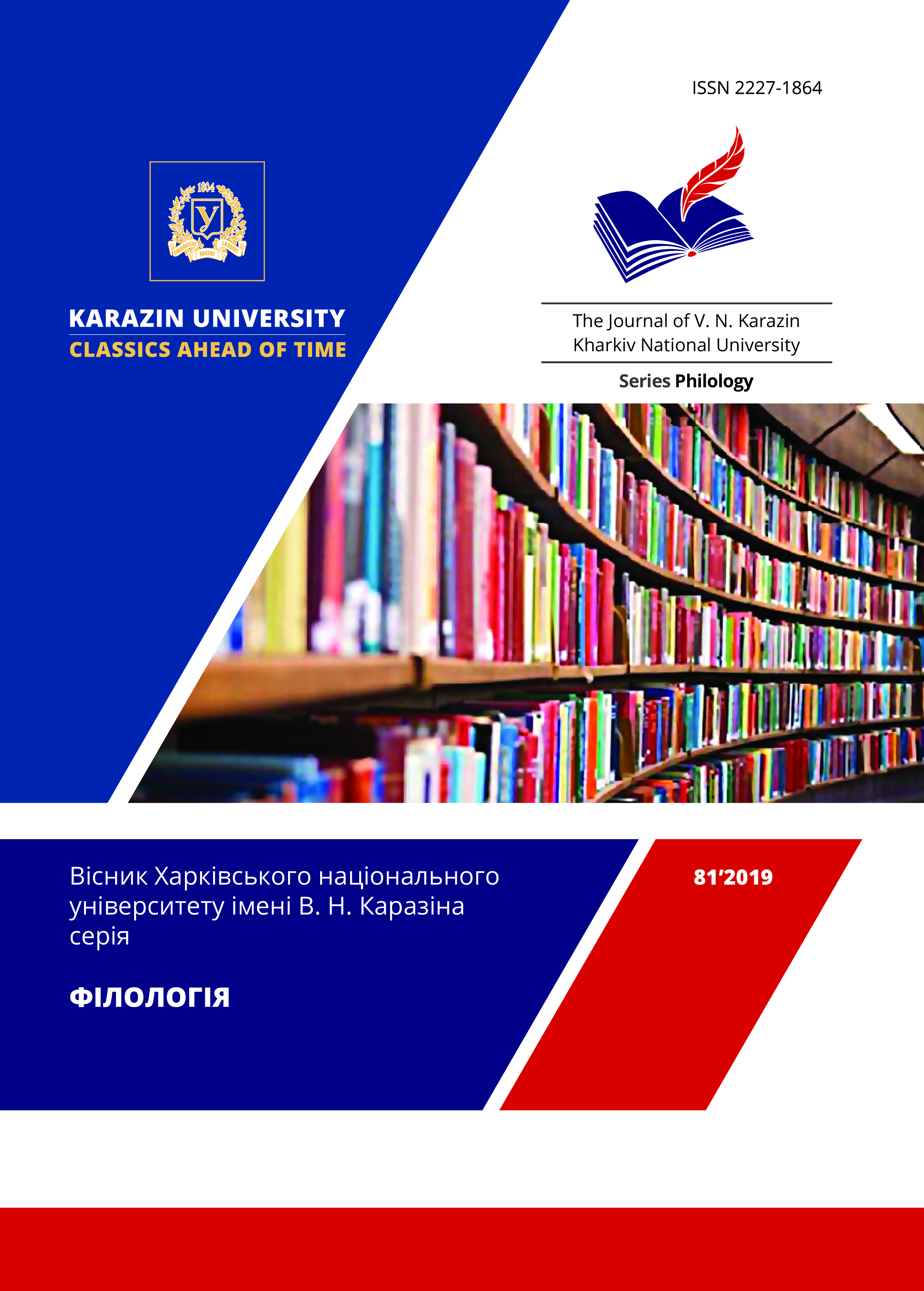Cross-cultural image in Kazuo Ishiguro’s novel “The Remains of the Day”
Abstract
The article deals with the analysis of the image of the protagonist, depicted in the novel “The Remains of the Day” written by Kazuo Ishiguro. Created at the crossroads of various cultural paradigms, the novel belongs to the space of multicultural literature, which increasingly attracts the attention of the present-day researchers. A mention also should be made that multicultural authors are defined as carriers of the unique vision of the world, since the so-called intercultural sensibility, that appears to be a result of cultural accumulation, brings about a qualitatively new type of creativity. It is to this generation of writers that the creativity of the modern English writer of Japanese origin, Kazuo Ishiguro, belongs to. The special position of a hybrid writer, who cannot be credited neither to the generation of Japanese nor to the generation of English writers, gives rise to a unique style of narration. This style of narration combines the most prominent features of both cultures. It should be stressed that the image of the protagonist of the analysed novel makes it possible to identify a number of ethno-cultural units that are common to both the Japanese and the English. In addition to this, the author creates a cross-cultural image. The English nature of writing is manifested in the references to the characteristic features of the typical Englishman, whose image originates from the time of the Victorian novel. First and foremost, such features as loyalty, diligence and dedication should be noted as an example. The eastern element of the image of the protagonist is manifested in the appeal to the Eastern philosophy of Buddhism and the implementation of the basic principles of the samurai code of honour. However, it is difficult to distinguish different national components in the novel, because both nations have a common set of attributes that form the so-called “interspace” of the novel. Due to the successful manoeuvring of these attributes, certain ethno-cultural stereotypes are being eroded. However, the juggling of the stereotypes is not an end in itself. They rather serve as an auxiliary means of disclosing the author's philosophy. The above-named problems are studied on the example of the works devoted to the concept of Englishness and Japanesseness and well as the treatises “Hagakure: Book of the Samurai” by Yamamoto Tsunetomo and “Bushido: The Soul of Japan” by Inazo Nitobe.
Downloads
References
Konchakova C. Problema nacional'noj identichnosti v pozdnem tvorchestve Ch. Dikkensa : «Bol'shie nadezhdy», «Nash obshhij drug», «Tajna Jedvina Druda» : avtoreferat dis. kandidata filologicheskih nauk : 10.01.03. Voronezh, 2011. 24 s.
Korshunova E. S. «Tipichnyj anglichanin» kak literaturnyj obraz. Omskij nauchnyj vestnik. 2011. Vyp. № 3 (98). S. 98–101.
Matuzkova E. P. Ob anglijskosti. Vіsnik ONU. Ser. : Fіlologіja. 2013. T. 18, Vip. № 2 (6). S. 94–101.
Merkulova M. G., Satjukova E. G. «Anglijskost'» v otechestvennom literaturo-vedenii : teoreticheskoe osmyslenie i izuchenie ponjatija. Gumanitarnye issledovanija. 2010. Vyp. № 4 (36). S. 221–226.
Nesterenko Ju. S. Jelementy japonskoj kul'tury v romane Kadzuo Isiguro «Ne otpuskaj menja». Znanie. Ponimanie. Umenie. M. : Moskovskij gumanitarnyj universitet, 2015. Vyp. № 4. S. 326–334.
Nitobe I. Busido. Dusha Yaponii. K. : Arii, 2015. 192 s.
Stovba A. S. Obraz dvoreckogo v romane Kadzuo Isiguro «Ostatok dnja» : kross-kul'turnyj aspekt. Svіtova lіteratura na perehrestі kul'tur і civіlіzacіj : zb. nauk. prac'. Sіmferopol' : «Krims'kij Arhіv», 2012. Vip. № 6. S. 219–229.
Usenko O. P. Problema kul'turnogo ta movnogo reіmportu rannіh romanіv Kadzuo Іshіguro v Japonіju. Movnі і konceptual'nі kartini svіtu. 2013. Vip 45. C. 255–260.
Jamamoto C. Hagakurje. Izdatel'stvo «Je», 2016. 160 s.
Ishiguro K. The Remains of the Day. NY. : Vintage International Edition, 1993. 245 p.
Lodge D. The Art of Fiction. Illustrated from Classic and Modern Texts. London : Penguin Books, 1992. 240 p.
Mason G. Inspiring Images : The Influence of the Japanese Cinema on the Writing of Kazuo Ishiguro. East West Film Journal. 1989. Vol. 3. Pp. 39–52.
Sim W. Kazuo Ishiguro. London ; New York : Routledge, 2010. 187 p.




